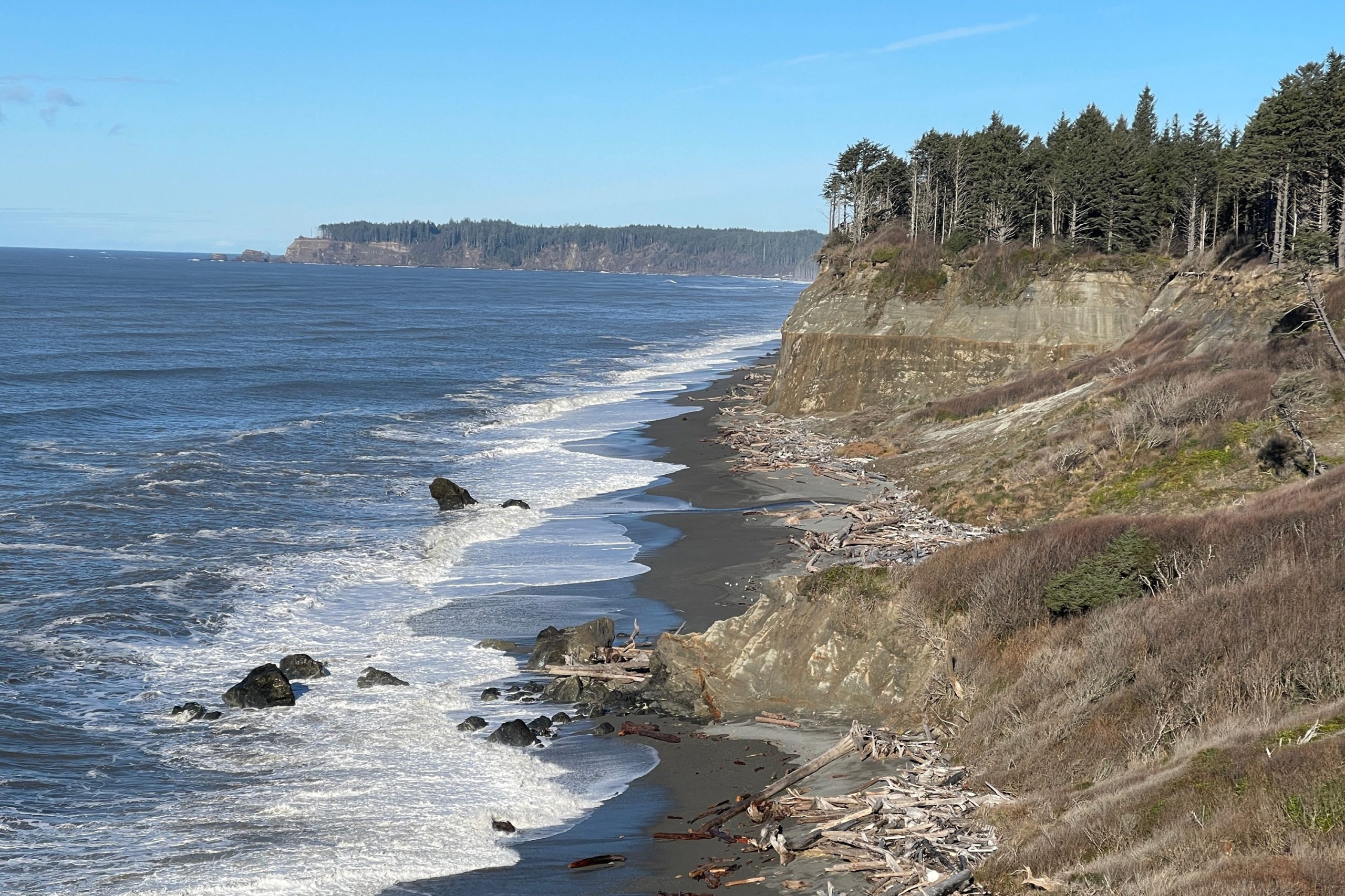In a lush stretch of forest along Washington state’s outer coast, the Quinault Indian Nation is preparing for the future by moving its villages away from the rising Pacific Ocean and tsunamis.
Over the last decade, the coastal tribe has been working on relocating its villages out of the reach of the expanding ocean, setting an example for other communities facing the challenges of climate change.
Taholah, the largest village on the Quinault Reservation, sits at the confluence of the Quinault River and the Pacific Ocean. To protect it from pounding waves, a seawall made of massive boulders has been erected.
Rising Ocean Levels (Credits: Eos.org)
However, the seawall is not always sufficient to withstand the forces of nature. Lia Frenchman, a Quinault tribal member, and historic preservation officer, acknowledges the inevitable: “My street will inevitably be in the ocean at some point.”
Frenchman’s home, like many others in Taholah, faces the threat of flooding during the highest tides of the year, known as king tides.
Tidal flooding poses a significant risk to Taholah’s residents, and the effects are felt every winter, with waves occasionally depositing large driftwood logs onto the seawall and into people’s backyards.
The village of 800 people has experienced evacuations due to tidal flooding, highlighting the urgency of finding a more sustainable solution.
Taholah is not only vulnerable to regular tidal flooding but also faces the potential of a devastating tsunami if a major earthquake occurs in the nearby Cascadia Subduction Zone.
The Quinault Nation has embraced a strategy known as “managed retreat,” acknowledging the long-term impacts of human-driven climate change on coastal communities. Managed retreat involves moving communities away from vulnerable areas to safer locations.
While this approach can be emotionally and financially challenging, it is increasingly recognized as a necessary response to rising sea levels and other climate-related threats.
Taholah has taken concrete steps towards a managed retreat, marking a notable effort in the United States to address climate change-induced challenges.
In December, the Quinault government achieved a significant milestone by developing infrastructure for a new village site, located about a mile from the current lower village and 130 feet above sea level.
The new site, set against the tribe’s timberlands, features streets, sidewalks, and utilities, laying the foundation for housing construction.
The Quinault tribal council aims to have the first elders move into new homes within the next year or two, with the full relocation expected to take at least another decade.
The Quinaults’ proactive approach to addressing the impacts of climate change sets a precedent for other coastal communities facing similar challenges worldwide.
As global sea levels continue to rise due to climate change, the experiences of communities like Taholah underscore the importance of adaptation and planning for a sustainable future.
